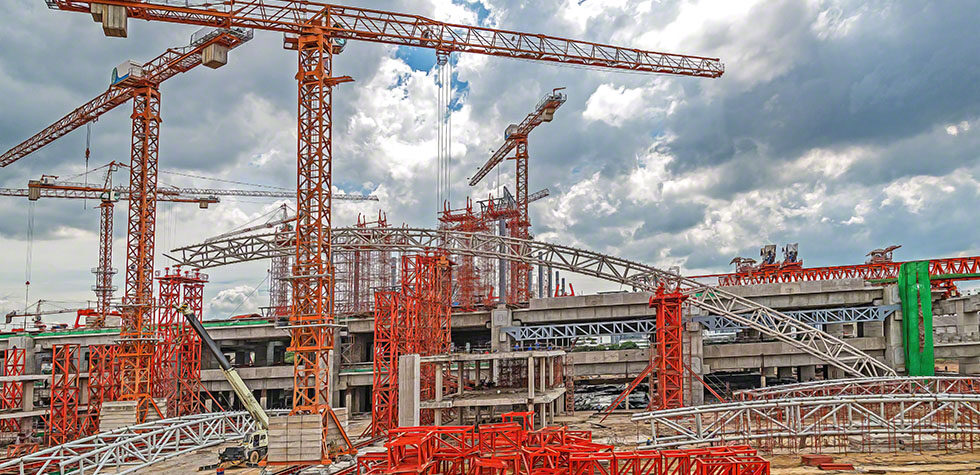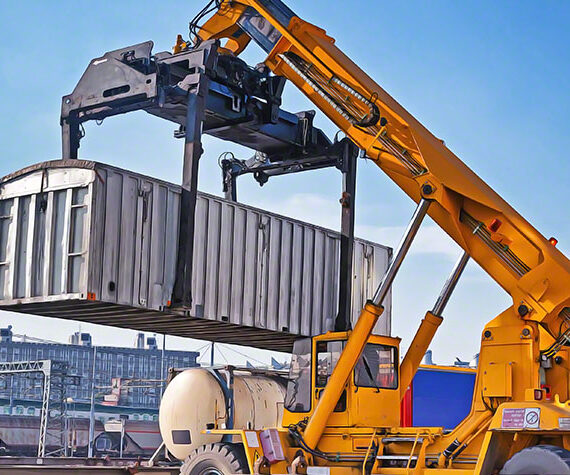Telescopic cranes play a vital role in the construction industry due to their ability to lift heavy loads and their flexibility in maneuvering around construction sites. They are used in a variety of construction projects, ranging from small residential buildings to large commercial projects. You can also find them at crane services very easily.
The use of telescopic cranes has revolutionized the construction industry by increasing efficiency and productivity, reducing costs, and minimizing the risks associated with heavy lifting. With their telescoping boom design, these cranes are capable of reaching high heights and lifting heavy loads in a compact and agile manner.
Telescopic cranes are a type of mobile crane that use hydraulic mechanisms to extend and retract their booms. They are versatile and powerful machines that are used in a wide variety of construction projects, from building skyscrapers to lifting heavy equipment. In this article, we will take a closer look at telescopic cranes and their uses.
What are Telescopic Cranes?
Telescopic cranes are mobile cranes with a telescopic boom that can extend and retract. The boom consists of several sections that can be adjusted to different lengths to reach various heights and distances. The boom is typically operated by hydraulic cylinders that allow for smooth and precise movements.
Uses of Telescopic Cranes
Telescopic cranes have a wide range of uses in the construction industry, as well as in other industries that require heavy lifting. Here are some of the most common uses for telescopic cranes:
Construction
Telescopic cranes are widely used in the construction industry for a variety of tasks, such as lifting and placing steel beams, concrete slabs, and prefabricated building components. They are also used for excavation and digging tasks, as well as for assembling and disassembling heavy machinery.
Maintenance
Telescopic cranes are also used for maintenance tasks, such as replacing rooftop air conditioning units, repairing bridges and overpasses, and cleaning and maintaining tall buildings.
Shipping and Transportation
Telescopic cranes are often used in shipping and transportation to load and unload cargo from ships, trains, and trucks. They are also used to move large containers and other heavy objects in ports and warehouses.
Emergency Services
Telescopic cranes are often used by emergency services such as fire departments to rescue people from high-rise buildings, or to remove debris and wreckage from accident sites.
Benefits of Telescopic Cranes
There are several benefits to using telescopic cranes over other types of cranes:
Mobility
Telescopic cranes are highly mobile and can be easily transported to and from different job sites. This makes them ideal for construction projects that require the crane to be moved frequently.
Versatility
Telescopic cranes are versatile and can be used for a wide range of tasks, from heavy lifting to delicate precision work. The ability to adjust the length of the boom makes them particularly useful for working in tight spaces.
Easy to Operate
Telescopic cranes are relatively easy to operate, thanks to their hydraulic systems and intuitive controls. This means that they can be operated by a single person, which can save time and money on labor costs.
Efficiency
Telescopic cranes are highly efficient, thanks to their ability to quickly and easily adjust the length of the boom. This means that they can be used to complete tasks quickly and efficiently, which can save time and money on projects.
Conclusion
Telescopic cranes are a versatile and powerful tool that are widely used in the construction industry, as well as in other industries that require heavy lifting. They offer several benefits over other types of cranes, including mobility, versatility, ease of operation, and efficiency. If you are considering a construction project that requires heavy lifting or precise positioning, a telescopic crane may be the right choice for you. So, ask your nearest crane services VA to rent telescopic cranes for your project.



